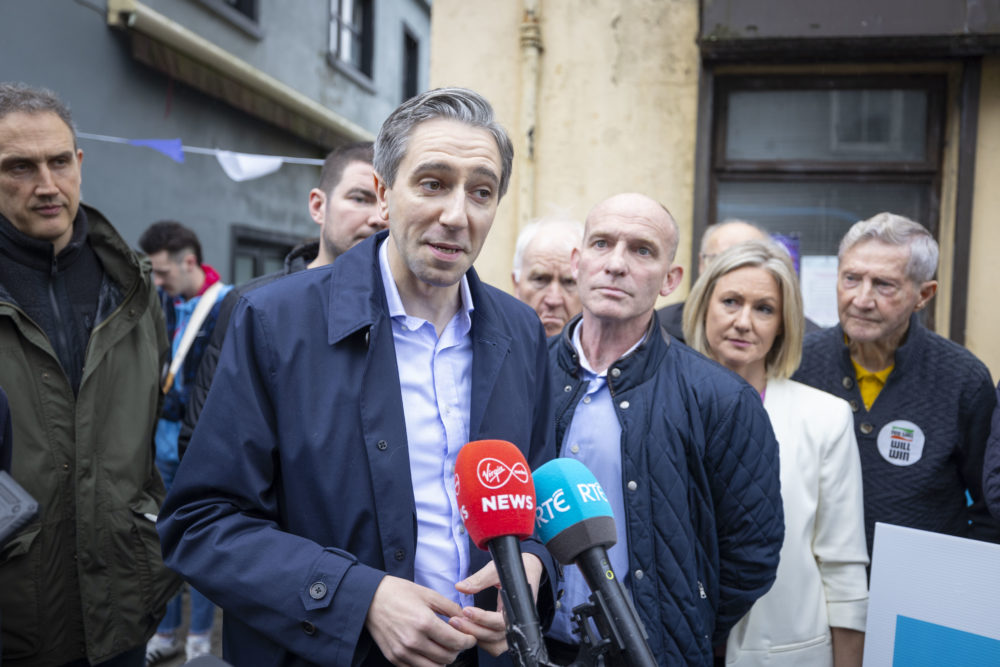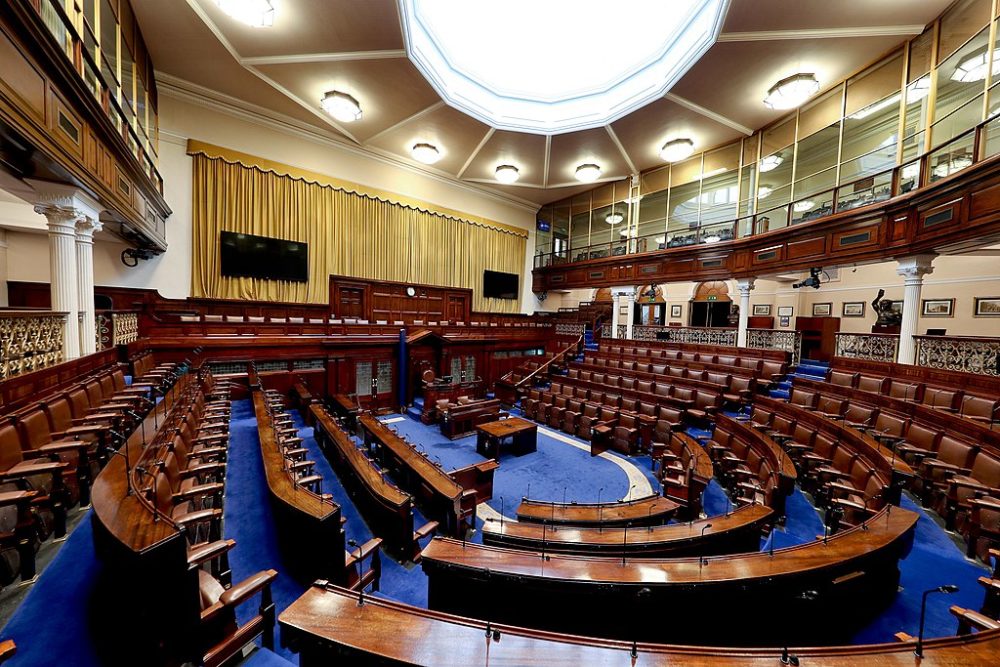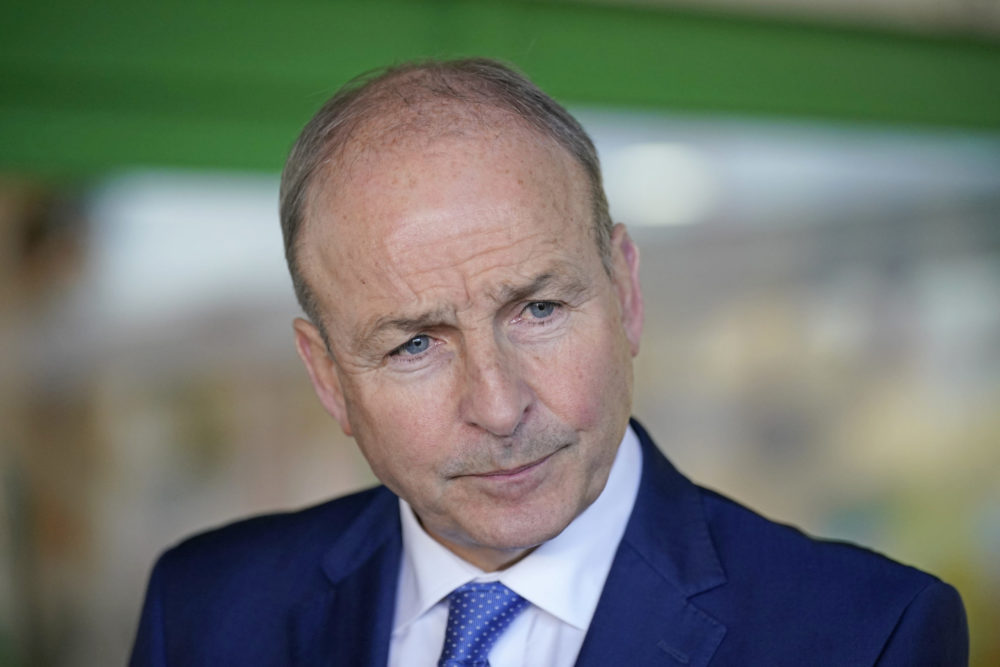How to be an expert on Olltoghchán24, the Irish General Election 2024

Lila Haines
The neighbours to the west are at it again – after two referendums plus local and European elections just a few months back, Ireland is in the throes of a short sharp general election campaign.
Votes will be cast on 29 November, three weeks after Taoiseach Simon Harris ‘went to the Áras’ on 8 November to ask President Michael D Higgins for permission to call an election to Dáil Éireann – a constitutional requirement, rather like a UK PM going to see the sovereign.
The first opinion poll since the official campaign kicked off shows Fine Gael in pole position, as they have been since Simon Harris replaced Leo Varadkar as party leader and Taoiseach last March.
Fianna Fáil and Sinn Féin are neck and neck on 19%, while other parties cluster at the bottom of the popularity graph, in this and other recent polls.
Independents form a significant but diverse grouping, many if not all of them open to cooperating with a future coalition government – at a price.
Taoiseach Simon Harris (FG), on 50%, remains the most popular leader, followed by Micheál Martin (FF) on 45% and Mary Lou McDonald (SF) on 31%; Roderic O’Gorman, leader of the Green Party / Comhaontas Glas (the third partner in the outgoing coalition), is on 21%.
So, barring a major upset before 29 November, Fine Gael looks set to lead the next government, probably joined again by Fianna Fail in a new coalition, but not necessarily by the third government partner, the Green Party / Comhaontas Glas, which faces a tough election despite a record of delivery during the 2020-24 government.
Basics and complications
Voting is by single transferable vote (PR-STV), which has been used since 1922, is enshrined in the Constitution, and is popular with voters – but complicates forecasting.
Multi-seat constituencies: Each constituency elects three, four or five TDs – with the larger ones offering smaller parties or independents a better chance of success.
A bigger Dáil: Ireland’s electoral commission is legally required to adjust the number of Teachtaí Dála (TDs) in line with population – the 34th Dáil will have 174 TDs, a historic high, up from 160.
New constituencies: the number rises to 43.
New parties: Immigration emerged as a live issue in the 2024 local and European elections, and new anti-immigrant parties gained seats in some local councils – but there is little to suggest the far right will make significant gains on 29 November.
Independents could take 20% of seats and emerge as a source of potential coalition partners.
Such factors make forecasting harder – as Welsh pundits are finding regarding the 2026 Welsh elections to a larger Senedd with closed party lists.
The big issues
In 2020 voters rated health (32%) and housing and homelessness (26%) as the most important issues by far when deciding how to vote, according to an Ipsos MRBI exit poll – which goes some way to explaining why support for SF soared then, and why they’ve been majoring on housing ever since.
There’s been progress on housing since 2020, but nowhere near enough – housing completions are rising, aspiring homeowners and renters have been inundated with support schemes, but there are major barriers to speeding up construction: in this highly educated population a job on a building site is not on many career lists.
An Irish Times / IPSOS survey carried out on 12 and 13 November 2024 found that the cost of living is the factor most likely to influence how 30% of respondents will vote, followed by health (18%), house prices (17%), immigration (9%), the economy (6%), the cost of rent (6%), law and order (5%), climate (4%) and tax (3%).
The economy
Recent polling by Red C for The Irish Business Post found that 82% of voters considered the ability to manage the economy ‘very important’ with another 15% saying it was ‘somewhat important’ to them – which should be good news for the more centrist parties, but perhaps somewhat esoteric for voters worried about personal issues such as health or house prices.

In the wake of Donald Trump’s victory in the US presidential election concerns about how his tariff plans will impact Ireland’s globalised economy have increased.
But worrying about US transnational companies leaving Ireland for the States to avoid Trump’s proposed tariffs is unlikely to be central to many voting decisions.
Nor is the fact that Ireland is the seventh largest source of foreign direct investment (FDI) into the US, involving some 700 Irish companies employing 110,000 people in the US – but this ‘two-way street’ is as unlikely to arise on the doorstep in an Irish election campaign as it is in Donald Trump’s inner MAGA circle.
What will happen?
In Ireland’s June 2024 local elections a majority of voters opted for what they knew – familiar faces, community causes, mainstream parties, incumbents of various hues – and they appear unlikely to diverge radically from that approach on 29th November.
But a general election is different and growing up with PR-STV sharpens the focus.
Uncertainties
Voters have become more volatile, more likely to switch support between parties during campaigns.
The pattern of political allegiances associated with the ‘two and a half party’ system of old may be in its death throes, and voters in this already sophisticated electorate, reared on the finer detail of PR-STV, are interested in policy details.
An exit poll of 5,300 electors in the 2020 general election found that 28% had decided how to vote during the campaign, 16% in its last couple of days, and 8% on polling day itself.
That was reflected in the Sinn Féin phenomenon: their support rose steadily throughout the campaign, taking them 10 percentage points ahead of where they began.
But this is a short campaign – just three weeks long from dissolution of the Dáil to polling day on 29 November – and SF has taken a heavy hit from recent scandals and how they mishandled them.[1]
That’s not to say they can’t recover, given their legendary discipline and enviable bank balance (including a multi-million pounds legacy from an Englishman living in Wales).
Data from the online ad libraries of Meta, X and Google revealed that, in the weeks leading up to the general election announcement, SF spent more than three times as much on online ads as its closest rival.
A poll by Red C poll found that, with the exception of housing, Fine Gael was ahead of SF and FF on each of the nine issues polled – suggesting a concerned but cautious electorate may deliver a result broadly similar to that of the local elections.
When the voting’s over
The campaign may be short but transfers and eliminations, the sharing out of second, third, fourth and many lower preferences, mean the counting could take days.
And government formation negotiations could take months, as was the case in 2020.

If the polls and pundits are right, Fine Gael will win the popular vote, followed by Fianna Fail, with Sinn Féin in third place.
If so, the current Taoiseach, Simon Harris, whose personal popularity has boosted his party’s, will get first try at forming a government. He’ll need Fianna Fáil on board, but after this sharply competitive campaign it may take prolonged negotiations for even those two former partners to agree a programme for government.
Then there’s the matter of a majority, preferably one that’s more than marginally safe – and that needs more seats than the two together look likely to win.
Would they want to govern with the Greens again?
The Greens fairly claim that they delivered in government – which also means they persuaded their Fine Gael and Fianna Fáil partners to move Ireland in an environmentally safer direction.
But the polls suggest the Greens can hope for only four seats.
Alternatively or additionally, one or more of the other small parties may be in the frame as partners.
A left alliance
If Labour and the Social Democrats between them regain a tranche of votes lost to Sinn Fein in 2020, they could attract offers.
But is Labour ready to risk going into coalition again, as it has done so often over the decades, given how it was burned in the recent past? And have they a better option?
Some pundits suggest that a left alliance is timely, with polls suggesting that Labour, the Social Democrats (founded in 2015 largely by former Labour members) and the Greens winning 15% between them – which would see them well placed to challenge Sinn Féin to become the official opposition.
In another scenario, Sinn Féin could try to woo the left parties into an SF-led government, but they might be wary.
Declaration of interest
I’ll be keeping a special eye on one of the new constituencies, Wicklow-Wexford, which crosses county borders and will elect three TDs to the 34th Dáil – and happens to have my home town of Arklow/An t-Inbhear Mór as its de facto capital.
It’s highly unusual in not having a sitting TD defending a seat but five parties have selected candidates, popular Arklow councillor Peir Leonard is running as an independent and when registration closes the field might widen.
Show how clued up you are
While waiting for the results…
Do ask: What could Wales do with a windfall the size of Ireland’s Apple tax bonanza? Following a prolonged battle in the EU Court of Justice Apple was ordered to pay Ireland 13 billion euros in back taxes (worth more when interest is added) and Dublin received the first tranche recently.
The Greens pledge to put most of it into upgrading public transport across the land, Fine Gael say they’d use it to fuel their housing plans, and every citizen has her or his own idea for how to spend it.
Don’t mention the Dáil bike shed in the grounds of Leinster house, costing a cool 350K euros – expensive if petty cash sized in the context of Ireland’s reserves – but the kind of blunder voters don’t forget or forgive and which could marginally influence some voting decisions.
Lila Haines is the author of ‘Radicals & Realists: Political Parties in Ireland’, published by Welsh Academic Press in 2022, which is widely available in bookshops and online, as well as on Kindle.
Support our Nation today
For the price of a cup of coffee a month you can help us create an independent, not-for-profit, national news service for the people of Wales, by the people of Wales.




